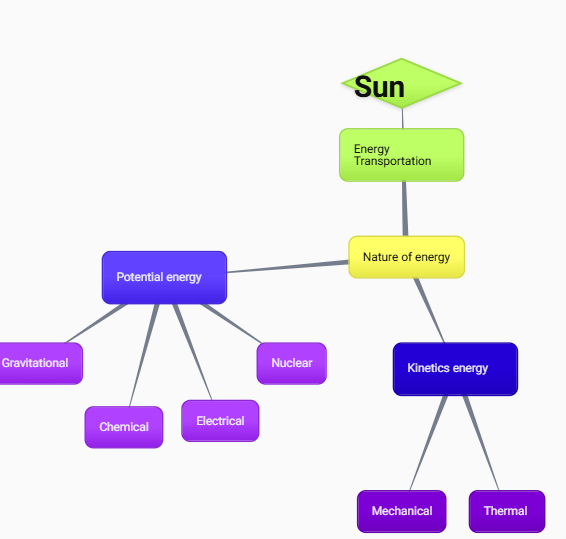Activity 2.3 – Biosphere and Interconnections
BIOSPHERE AND INTERCONNECTIONS
Chapter 4: Energy and Ecosystem
In this chapter it will talk about the different variables of potential and kinetic energy. One of the many parts to the varieties is Energy transportation, which is one of the most important energies. This energy that can be transfer by varsity of states. For an example the best way for me was when the light from the sun goes to the solar panels, the solar panel turns it to electrical energy which is transferred to an electrical object. In the Articles it will discuss the 3 laws of the Thermodynamics which are very important when it comes to sciences. I find these laws interesting especially the first law is known for the Conservation energy. It means that the amount of energy that's there can go through varieties of states, but it can never be created nor destroyed. As for the Second law of Thermodynamic in the book it says it's a transformation energy that increases its entropy, entropy is a measurement of disorder of the system. It then leads to understanding the third law which discusses the contestant value of the temperature where it leads to 0. It then discusses the Earths flow and energy and how it works like how the energy is related to it.
Chapter 7: Biodiversity
Chapter 7 Biodiversity I found it the most important topic in this book because not many people realize how connected we are to the biodiversity or how important it is to make sure we keep the balance of the biodiversity alive. In this chapter It goes on about the richness of biological variation on how it exists at the levels of genetics, species richness, and community diversity on landscapes and seascapes also known as the echoscope because of it has inherent value. Some values are the Utilitarian value where the people are part of the ecosystem. Biodiversity is important to the survival of humans and their environment along with all other species because not only does the organisms actions affect each other but the Organization of life. The organization of life is basically the groups of organisms that are on earth throughout the animal kingdom. we see more into the scientific names of the species like the Arthropoda(insects), Mollusca (Snails, clams), sponges and my favorite is the Chordata(vertebrates). There has been a damage in biodiversity however because of the invading species and mankind, Human activities have resulted in the extinction of many elements of biodiversity, and the survival of many others is being placed at grave risk. in my chart I wanted to focus more on what makes the diversity like the scientific way with the mutations, DNA and more, even though the different animals would have made it looked more expanded.
Chapter 8: Biomes and Ecozone
Websites
https://bubbl.us/%C2%A0




Comments
Post a Comment